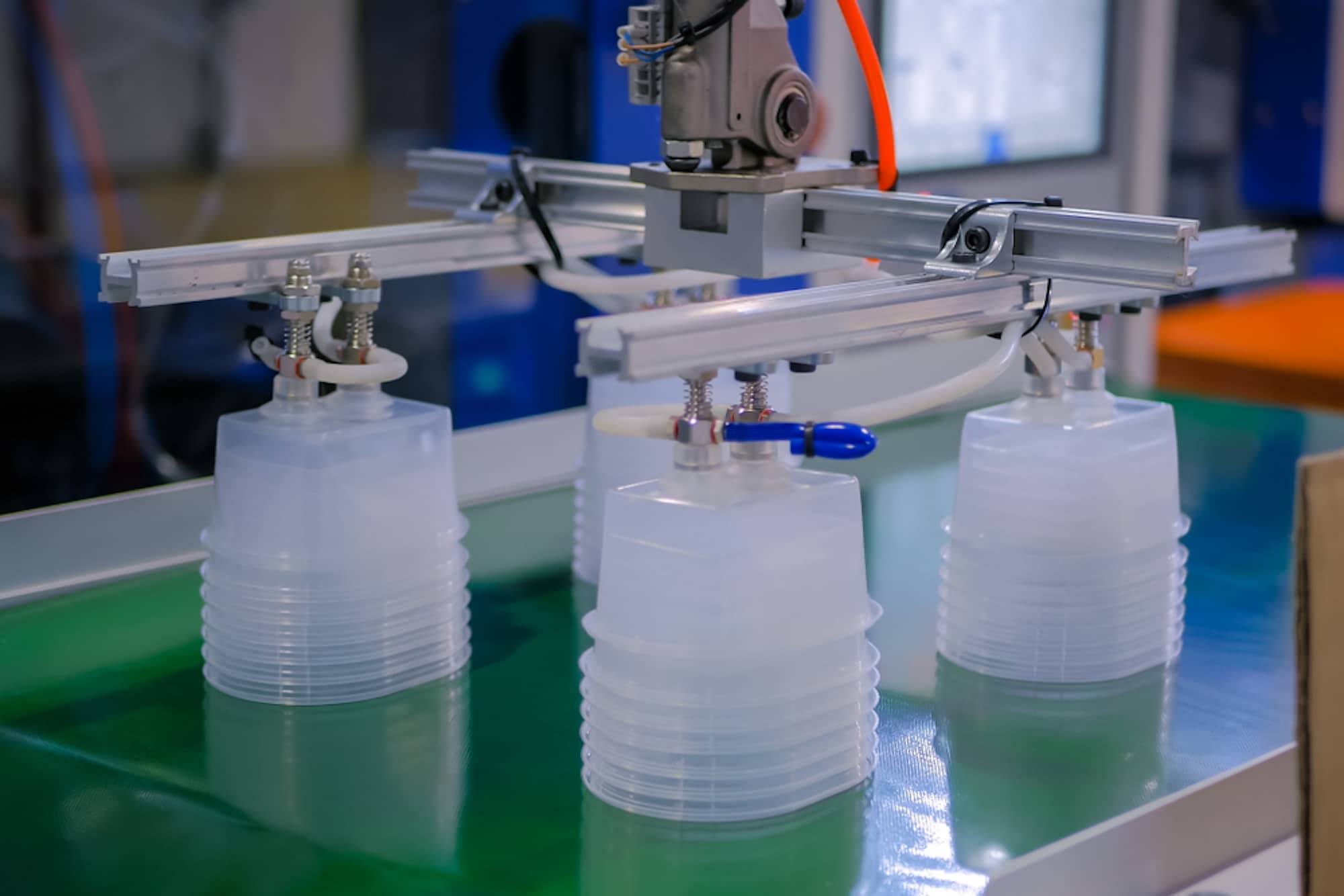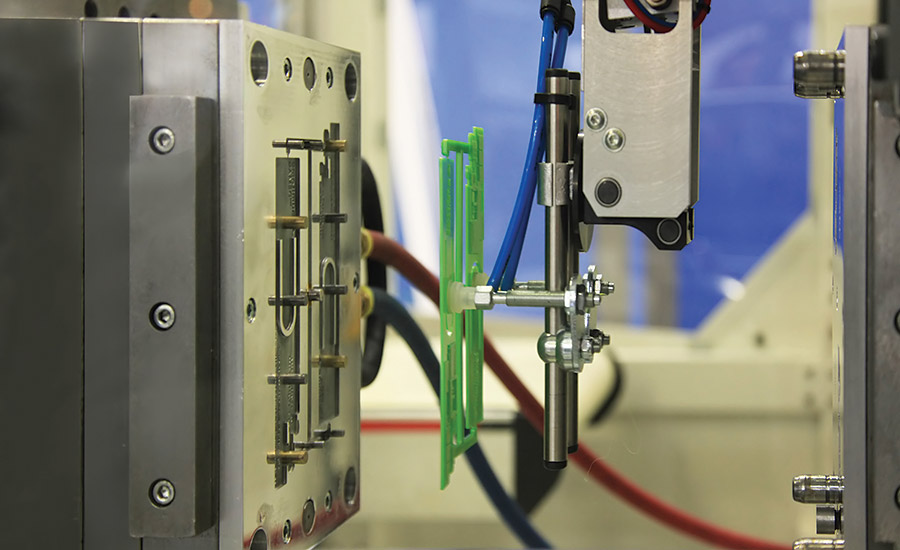
1.What is Plastic Injection Automation?
Automated tools are used throughout manufacturing to increase the efficiency, speed, and precision at which tasks are completed. Some automation tools like collaborative robots and robotic arms assist workers with their operations, while other automation tools complete tasks entirely on their own. Intelligent automation in manufacturing keeps engineers and machine operators safe during high volume, stress-heavy manufacturing processes.
 Automation tools in the injection molding process also help ensure parts are properly made, accurately measured, and formed to completion. Manual injection molding usually yields natural variations, which can result in poorly built or non-functional components. By maintaining precision and handling fragile parts delicately, automation in injection molding can prevent cosmetic and structural defects. Also, many automated tools have built-in features that prevent damage to the injection molding machine.
Automation tools in the injection molding process also help ensure parts are properly made, accurately measured, and formed to completion. Manual injection molding usually yields natural variations, which can result in poorly built or non-functional components. By maintaining precision and handling fragile parts delicately, automation in injection molding can prevent cosmetic and structural defects. Also, many automated tools have built-in features that prevent damage to the injection molding machine.
2.Advantages of Robotics in Plastic Injection Automation
Automation is becoming increasingly prevalent throughout every type of manufacturing because automated systems can take on most aspects of the work without operator action. This results in:
●Better utilization of the machines: Automated systems are interconnected and communicate through a centralized control system. This type of injection molding equipment will generate analytics that allows users to identify opportunities for improvement and alert human operators when parts malfunction or need inspection.
●Faster production: Robotic systems can move through processes without interruption. Properly maintained automated systems would operate 24/7, resulting in better per-unit production and quick order completion.
●Reduced labor costs: Robotic systems can handle work that previously required multiple people, allowing facilities to take on more orders with fewer staff members. Lower direct labor costs and associated expense reductions ultimately result in lower overall project costs.
●More sustainable fabrication: Because automated machines create high volumes of products with low error rates, they generate less waste from rejected or deformed parts.
3.Traditional Injection Molding vs. Plastic Injection Automation
 Introducing automation to injection molding processes has many benefits outside the direct molding process. One of the key differences between traditional injection molding and Youlin® plastic injection automation is the material handling component after the mold opens. Newly molded parts are fragile and vulnerable to deforming from pressure. Robotic systems with pneumatic grippers or vacuum-based collection systems can collect the workpiece without damaging or compromising it. Finely-tuned tools can also handle goods that need overmolding or further processing.
Introducing automation to injection molding processes has many benefits outside the direct molding process. One of the key differences between traditional injection molding and Youlin® plastic injection automation is the material handling component after the mold opens. Newly molded parts are fragile and vulnerable to deforming from pressure. Robotic systems with pneumatic grippers or vacuum-based collection systems can collect the workpiece without damaging or compromising it. Finely-tuned tools can also handle goods that need overmolding or further processing.
4.Applications for Plastic Injection Automation
 ●Loading and unloading
●Loading and unloading
The loading and unloading process for plastic injection molding machines uses a lot of space if left to manual processes. Robots can create an ideal working environment that efficiently operates in constrained areas and can load or unload the machines without the risk of human error. Automated machinery also uses the same amount of shot material per cycle, so the products are uniform and exact.
 ●Vision inspection and quality control
●Vision inspection and quality control
Humans can oversee inspection processes through the use of robotics and automation. Robots can orient the parts, use sensors to determine if there are any dimensional errors, and more.
 ●Assembly/sorting/stacking
●Assembly/sorting/stacking
Robotic systems can complete complex tasks after the mold stage. These tasks include welding to build assemblies, sorting and arranging parts for kits or packaging processes, and more. These capabilities further reduce the risk of error and speed up the order completion cycle.
 ●Secondary processes
●Secondary processes
Molded products often require secondary operations, such as decorating and labeling. Smart systems can employ side-entry injection molding robots to perform these tasks quickly and accurately.
6. FAQ
Q: What do you understand by Youlin® plastic injection automation?
A: Historically, automation has played a role in the most repetitive and rote portions of the injection molding process: removing ejected parts from the mold, picking and placing pieces on conveyor belts or other conduits to the next step in the process, and so on.
Q: What is automation in plastic processing?
A: Plastic processing automation uses robotics, vision, and other advanced technology to complete tasks such as plastic welding, heat staking, marking, riveting, spin welding, injection molding machine tending, or other processes involving plastic parts.
Q: Is injection molding an automated process?
A: While it's true that the people behind the process are crucial for injection molding's success, automated production processes are also key for the consistent and efficient production of defect free parts.